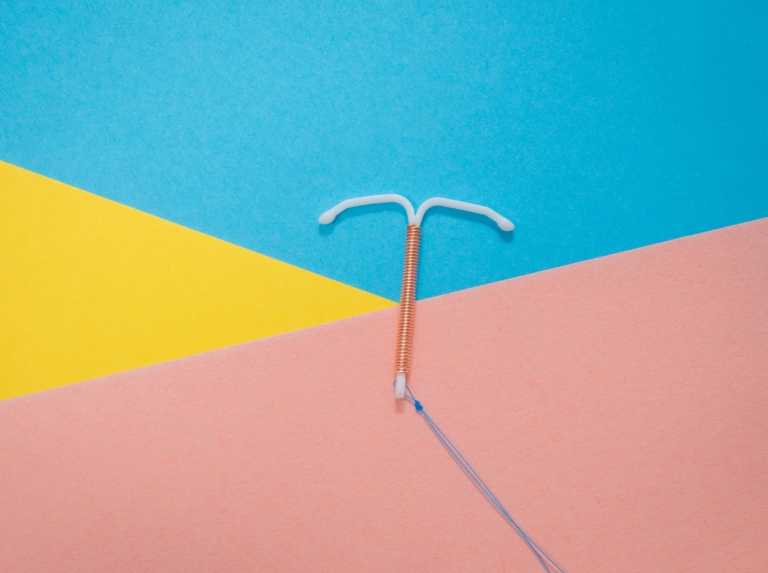In a study published in February 2020 in the international reproductive health journal Contraception, researchers found that many women seeking to have their intrauterine device (IUD) removed often face delays and roadblocks from their healthcare providers.
The study, led by Jennifer Amico of Rutgers Robert Wood Johnson Medical School, employed a mystery caller process to contact 229 clinics across ten mid-sized U.S. cities to determine access and barriers callers received upon requesting IUD removal. Here’s what they found: of the clinics they called, 60.7% said they offer an IUD removal appointment, and 61.2% of those could offer an initial appointment within two weeks (with a median of ten days); less than half (43.2%) confirmed the IUD removal could take place at the first visit, and 17.3% required at least one visit before removing the IUD. Still others (5.6%) told the caller they could not remove the IUD if it wasn’t placed at their clinic.
Further, many callers were informed of fairly significant financial barriers to IUD removal. Only 16.3% of clinics called offered sliding-scale fees for removal. And, “for the clinics that cited an out-of-pocket cost and did not offer sliding scale fees, the median cost of the IUD removal was $262, with a range of $50 to over $1000,” the study authors stated. “Neither appointment availability nor cost differed between primary care and family planning or gynecology clinics.”
Ultimately, the study revealed some troubling conclusions:
Overall, timely IUD removal appointments were available at the clinics we sampled, but both financial and clinic policy barriers to IUD removal were documented, including the need for multiple appointments and the total out-of-pocket costs.
Many women experience barriers to IUD removal
Considering women’s reasons for IUD removal can include side effects such as excruciating pain, heavy bleeding, dizziness, and depression, anxiety, and trouble completing work, it is very concerning to hear women are receiving barriers to IUD removal. However, unfortunately, it is not surprising.
At IUDalert.com, women are invited to share their stories of their experience on the IUD, and many have shared that their healthcare provider disregarded their symptoms, refused to remove the IUD, said it was not covered by insurance, or postponed it for a future visit.
One woman named Kelsey shared her IUD story that included numerous visits to doctors before having to insist on getting the IUD removed, after which her symptoms were relieved. A woman named Caitriona revealed, “it took 3 years of begging and pleading to be listened to” and get her IUD removed. Another woman named Malorey shared, “my doctor totally and completely dismissed ALL of my physical and psychological symptoms as ‘not related to the IUD.’” Tragically, a woman named Lexy shared that after sharing her concerns that her IUD was causing troubling symptoms, a trend emerged: “once again I was being told I was having a physical reaction to a mental problem.”
“My doctor repeatedly dismissed my pain,” another woman shared, “even though it was sometimes so severe I couldn’t go to my job or participate in normal activities.” She continued:
Although I was told to only expect a few days of pain following insertion, my OBGYN was unphased when I reported excruciating pain weeks and months later, simply advising me to “take Motrin” although I’d repeatedly told her it wasn’t helping. I was assured that my other side effects couldn’t be related to the IUD – even though all of them were known side effects documented in clinical trials.”
And consider Nicole’s story:
I had it inserted in April of 2017 and had persistent pain from day 1. . . . but was told it was normal and would go away after a few weeks—I just needed to push through. Not only was I in pain everyday, but my digestive system slowed to a crawl. At some point, I started losing hair. It was gradual at first, so I thought I was just shedding a little more, but by August, fistfuls of hair were coming out in the shower. When I went to consult an ObGyn (not my regular—I couldn’t get a appointment with her soon enough) and explained what was happening—that I was losing my hair and absolutely nothing else in my life had changed so it MUST be the IUD—she told me that was impossible, that I was crazy. When I said there were lots of women’s accounts I found online about hair loss and IUDs, she became irate. . . . I left her office crying and exhausted. In September 2017, I had the IUD removed.
These numerous accounts of women not being taken seriously by their doctors regarding their IUD side effects is very troubling when it comes to reproductive health and patient autonomy. We encourage every woman who knows she wants to have her IUD removed to remember that your doctor is supposed to take your concerns seriously, and if you don’t receive good care, you can request a second opinion.
According to an instructional video published by the American College of Obstetricians and Gynecologists (ACOG), providers should validate patients’ concerns and offer to remove the IUD in the same visit. We thank Jenifer Amico and her team for studying this phenomenon as it plays out for real women seeking care. As the study authors described the implications:
In our current climate focused on improving access to IUDs, it is essential to address and reduce barriers to IUD removal when desired, in order to preserve reproductive autonomy.
No woman should be denied this care, and we encourage anyone receiving pushback to a request for IUD removal to listen to your body, advocate for yourself, and insist on what you need.




